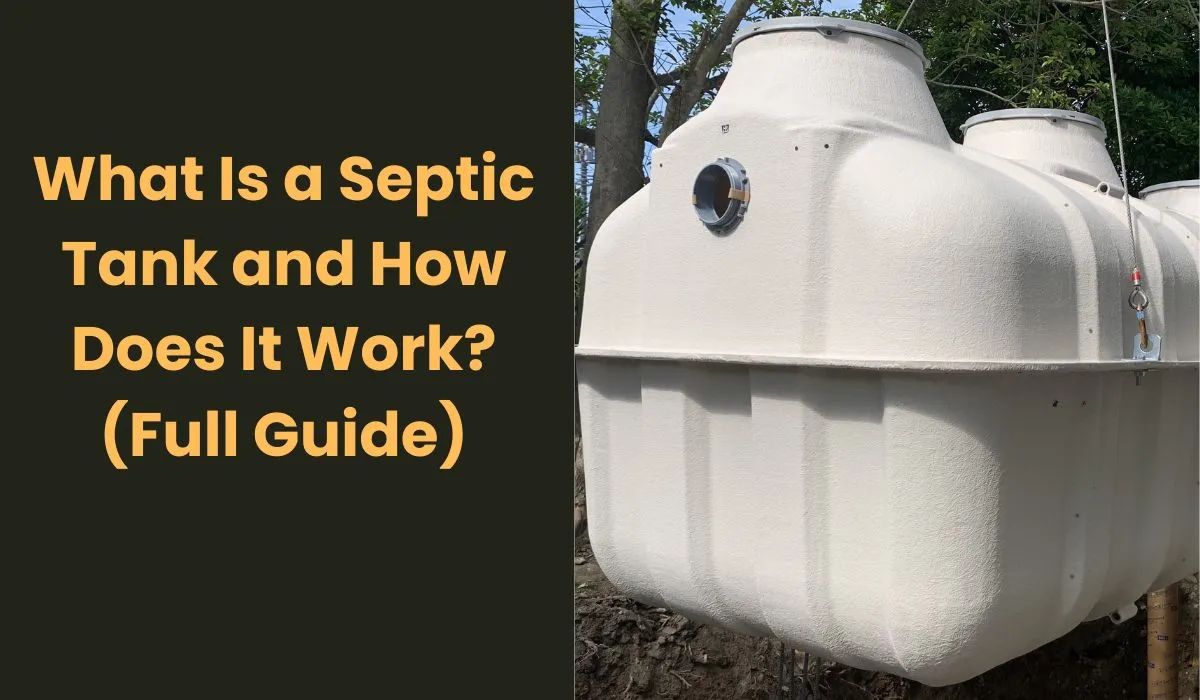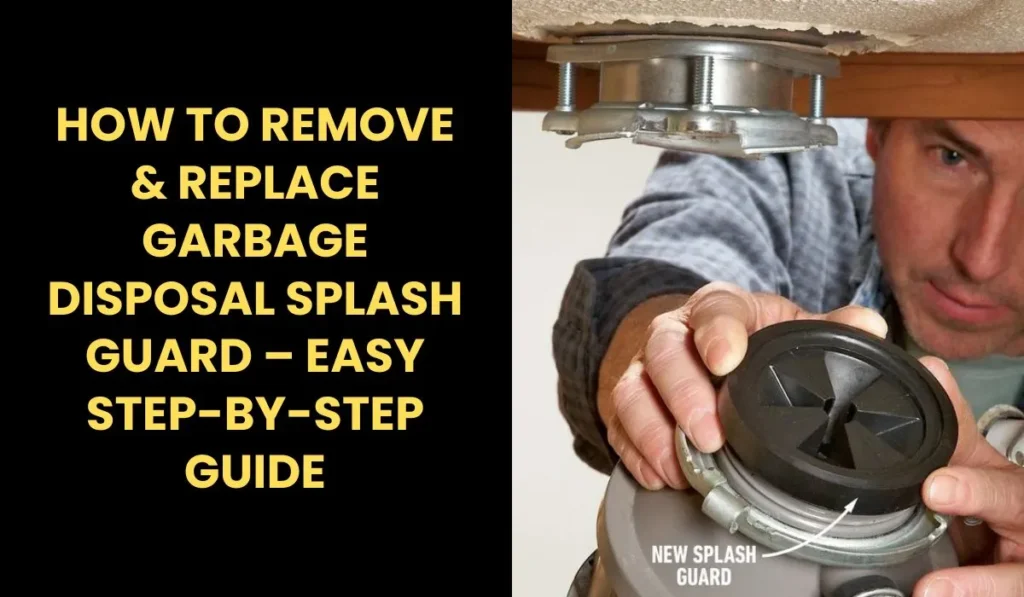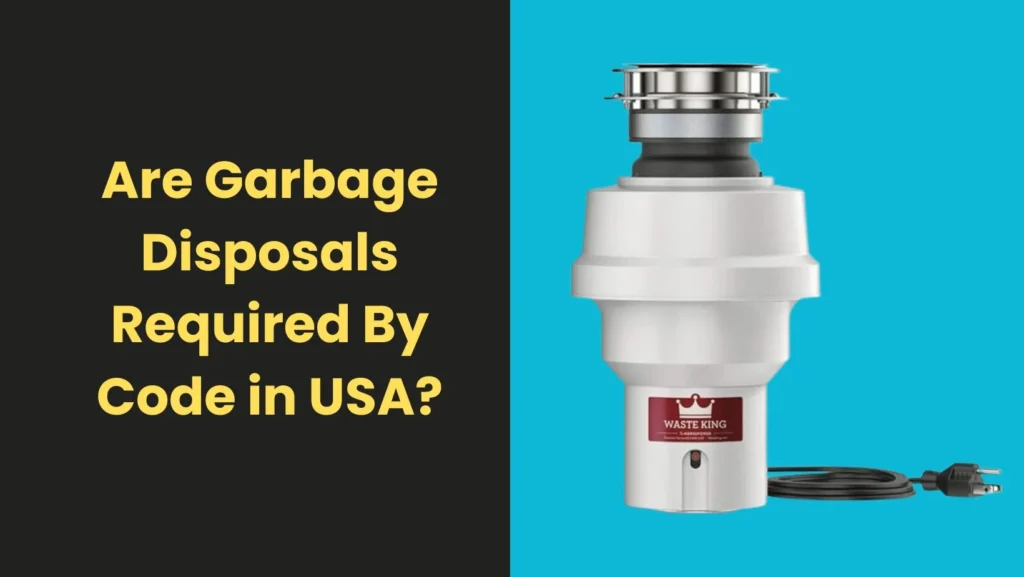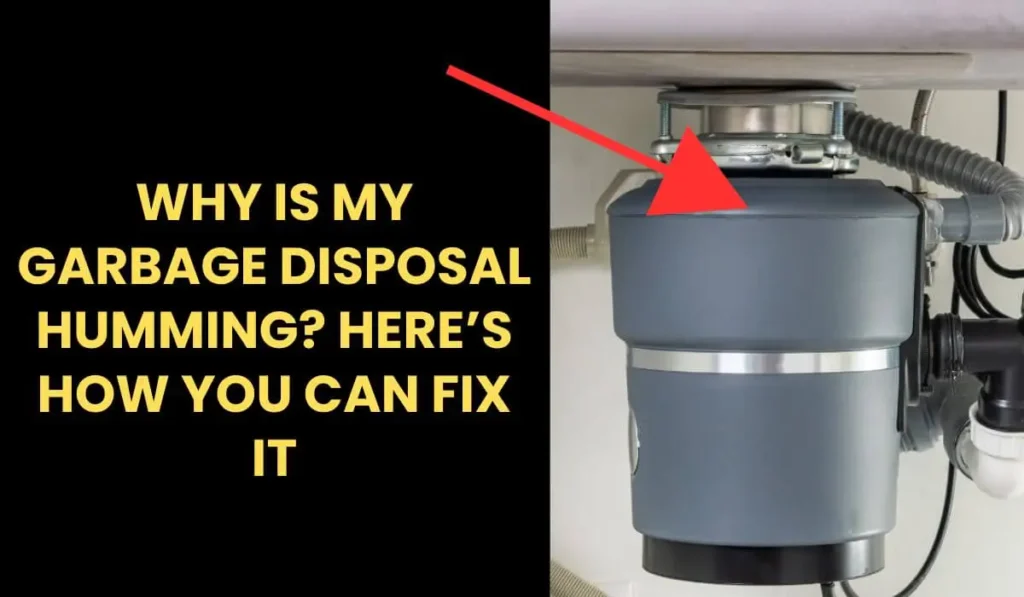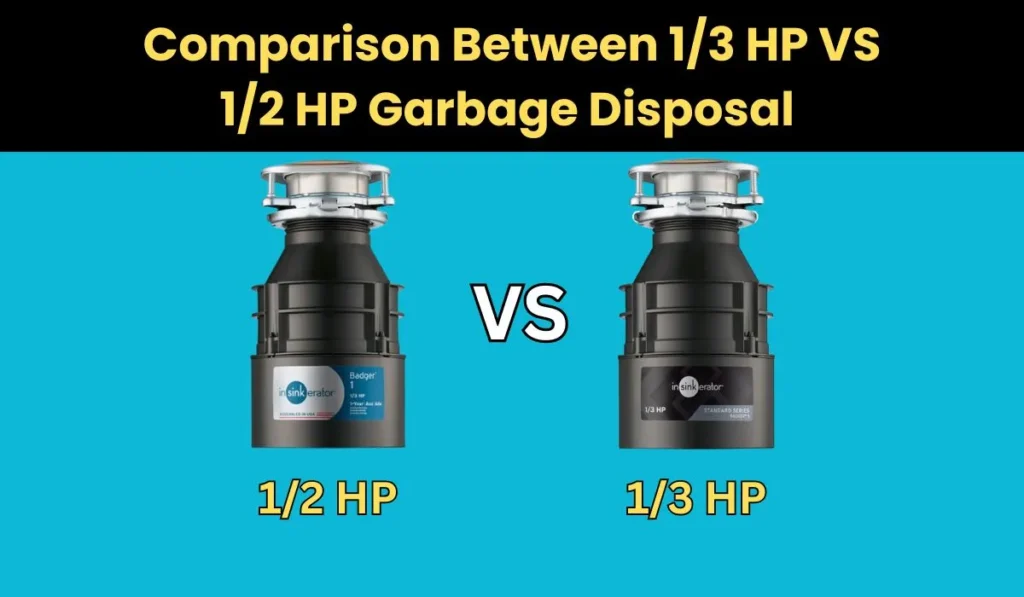What Is a Septic Tank and How Does It Work? (Full Guide)
If you’ve recently moved into a house that uses a septic tank, you might be wondering what exactly that means. If you’re used to living in a place hooked up to a city sewer system, the idea of a septic tank might sound a little confusing—or even a bit scary.
But don’t worry! Septic tanks aren’t as complicated as they seem.
In this article, we’ll explain what a septic tank is, how it works, and what you should keep in mind if your home depends on one. Whether you’re a new homeowner or just want to understand your property better, we’ll walk you through everything in plain, simple terms.
What Is a Septic Tank?
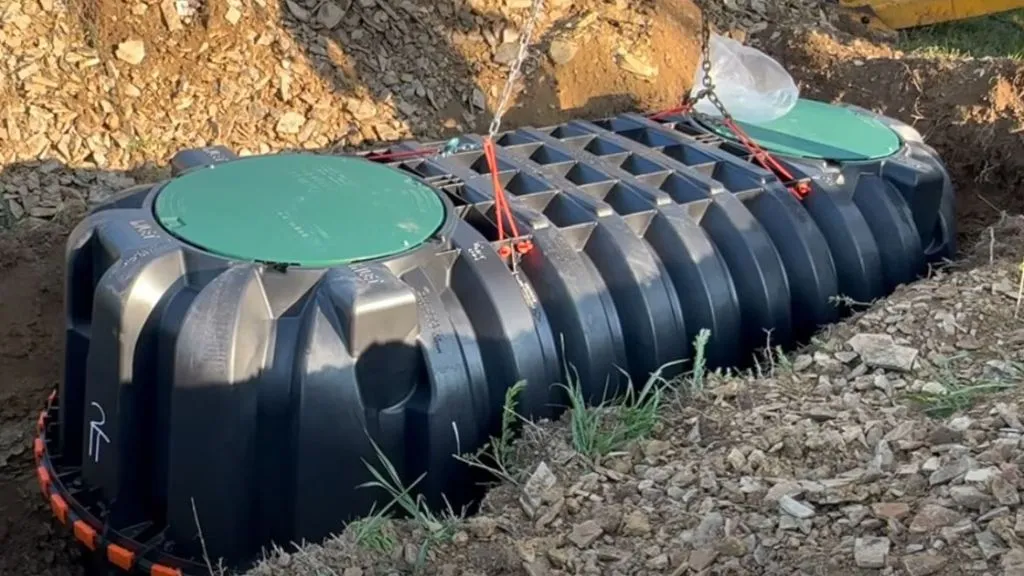
It is a large, underground container used for treating and managing wastewater from a home. It works by using natural bacteria to break down solid waste and safely separate it from the water, which is then filtered through the ground. These systems treat wastewater that comes from places like your bathroom, kitchen sink, and laundry room. Instead of sending it to a city sewer system, the septic tank handles it right on your property.
The tank itself is usually made from materials like concrete, plastic, or fiberglass. It’s watertight and buried underground — most often around 50 feet away from the house. Inside, there are two compartments and a special T-shaped pipe that helps stop solids and grease from flowing into the drainage area (also known as the drain field).
Septic tanks are a basic but reliable way to deal with wastewater, especially in areas where homes aren’t connected to the public sewer system — typically rural or remote areas. They let households use their plumbing like normal while safely managing what goes down the drain. It’s important to note that a septic tank isn’t the same as an effluent tank.
An effluent tank is more like a short-term holding tank that needs to be emptied often, while a septic tank treats and gradually releases water over time.
Even though septic systems are low-maintenance, they still require regular care. Without it, problems like backups, bad smells, or even environmental damage can happen. If the drain field gets overwhelmed, untreated sewage might surface in your yard or even flow back into your sinks and toilets. That’s why responsible upkeep is so important.
How Does A Septic Tank Work?
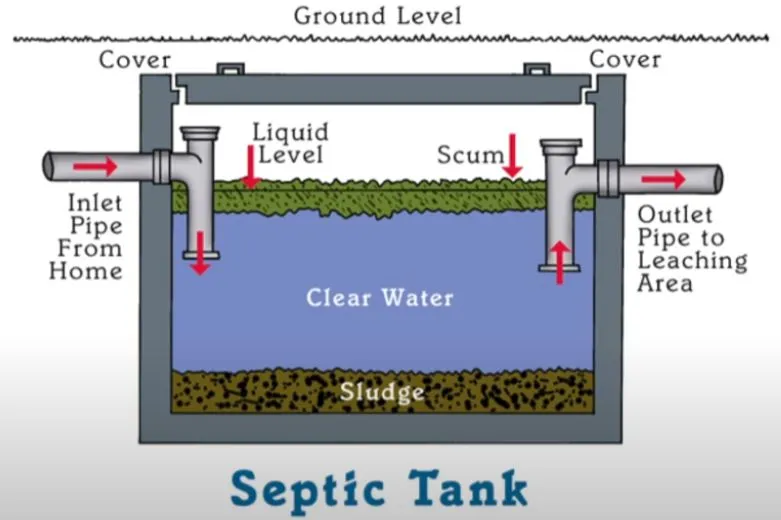
A septic tank is basically your home’s personal way of handling all the dirty water that comes from your toilets, sinks, showers, and even your washing machine. Its job is to safely manage and clean this water before it returns to the ground.
When you flush a toilet or run water down a sink or shower, all that used water flows through pipes and ends up in your septic tank. This water is a mix of blackwater (from toilets) and greywater (from showers, sinks, and appliances).
Once the wastewater enters the tank, it starts to separate. Solid waste sinks to the bottom and forms a layer called sludge. Meanwhile, oils, fats, and grease rise to the surface. In the middle, there’s a layer of liquid called effluent, and this is the part that gets sent out for more cleaning. While the waste sits in the tank, natural bacteria (which don’t need air) get to work, breaking down some of the solid waste to keep the tank from filling up too quickly.
Before the water leaves the tank, it might pass through a special effluent filter. This helps catch any leftover solids so they don’t clog up the next part of the system. Then the filtered liquid flows out to something called a drain field — an area in your yard that’s underground. It’s made up of gravel and pipes with tiny holes in them. Water trickles out of these pipes and spreads into the surrounding gravel and soil.
Here’s the cool part: the soil itself cleans water.Tiny organisms living in the soil break down any last bits of waste. By the time the water has passed through the soil layers, most of the harmful stuff — like bacteria and viruses — is gone. The cleaned water then makes its way back into the ground, eventually flowing into local streams, rivers, or natural water systems. It’s a simple and natural way to recycle water safely.
Types of Septic Tanks (Pros & Cons)
Septic tanks aren’t all the same. They come in different materials, and the one that’s right for you depends on things like your soil, your budget, and where you live. Let’s break down the most common types and what’s good (and not so good) about each.
1. Concrete Septic Tanks
Pros
Cons
2. Polyethene/Plastic Septic Tanks
Pros
Cons
3. Fiberglass Septic Tanks
Pros
Cons
What Are the Parts of a Septic System?
If you want to really understand how your septic system works, it helps to get familiar with the parts that make it all happen. Even though it might seem complicated at first, a septic system is just a few key pieces working together to deal with the dirty water from your house.
Septic Tank Inlet Pipe
Your septic tank receives all the used water from your house via this pipe. Whether you’re flushing the toilet, washing dishes, or doing laundry, that water flows through this pipe. It’s usually made of strong plastic and sloped slightly so gravity helps move the water down into the tank.
Septic Tank
As we have already discussed that, Septic tanks are large, sealed containers buried underground – usually made of concrete, plastic, or fiberglass. Its main job is to hold the wastewater long enough for everything to separate.
Effluent Filter
Most septic tanks have a filter at the outlet pipe that captures small bits of waste floating in the water. It prevents the drain field from becoming clogged. If your tank has one of these filters, it should be cleaned during regular maintenance. Not all tanks have this exact type of filter, but they all have something that helps keep the solid stuff in and only lets the liquid out.
Septic Tank Vent
As the bacteria inside the tank break down the waste, they produce gases. These gases need a way out, and that’s where the vent comes in. Usually, there’s a pipe that runs up through your roof and releases these gases into the air. If this vent is missing or blocked, it can mess with the flow of water in your system and cause pressure to build up.
Access Ports
Access ports are lids or openings on top of the tank that let professionals get inside for pumping or checking things out. These make it easier to clean the tank, check the filter, or do inspections without digging.
Risers
If your access ports are buried deep underground, risers can be added. These are vertical tubes that bring the lid up to ground level. They save you from having to dig up your yard every time the tank needs service — definitely a convenience worth having.
Outlet Pipe
As new wastewater flows into the tank, the same amount of treated liquid flows out through the outlet pipe. In this pipe, water is sent to a drain field. On properties with slopes or uneven land, gravity might not be enough to move the water, so a small pump may be used to help it along.
Drainage Field
This is the final step in the process, which is also called the leach field. It’s made up of perforated pipes buried in gravel trenches underground. After flowing out of the pipes, the treated water enters the gravel, then the soil. As it passes through the soil, tiny organisms help clean the water even more, removing any leftover bacteria or pollutants. Eventually, what’s left is clean water that safely returns to the earth.
Check out this video showing how a septic system works and how often should you pump your septic tank?:
Septic Tank vs. Sewer System: Which Is Better for You?
| Feature | Septic System | Sewer System |
|---|---|---|
| Initial cost | Lower upfront cost | Cost included in property taxes or connection fees |
| Monthly cost | None (after installation) | Monthly utility bill |
| Maintenance | Your responsibility | Handled by the local utility company |
| Ideal for | Rural or off-grid homes | Urban and suburban areas |
Conclusion
Septic tanks might sound a bit technical at first, but once you get the hang of how they work, it’s really just a straightforward, behind-the-scenes system doing a very important job. Every time you flush or run the washing machine, your system quietly gets to work — sorting waste, treating water, and sending it safely back into the earth.
If you’ve just moved into a home with a septic setup, or even if you’ve been living with one for years, knowing how it functions (and how to take care of it) can save you a ton of future stress. A little maintenance here and there, along with being smart about water use, can keep everything running smoothly without drama.
So the next time someone brings up septic tanks, you won’t need to guess or wonder. You’ll actually know what they do — and why they matter. And if something doesn’t feel right, don’t wait. Call in a pro and let them take a look before it turns into a mess. Better safe than sorry, right?
Further Reading:
How to Calculate the Right Septic Tank Size for Your Home
The Author

I’m Muhammad Nabeel Dar, an employee in waste management and the owner of Garbage Waste Disposal with more than four years of experience helping people to control waste and garbage disposals are the best tools to control it. Read more

